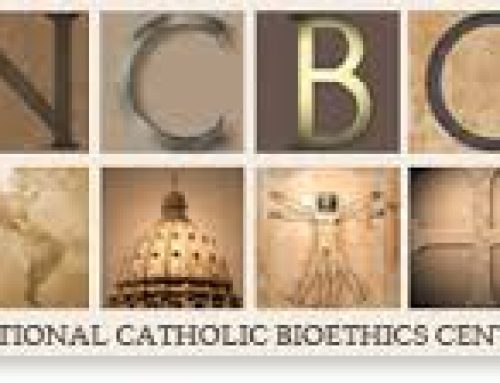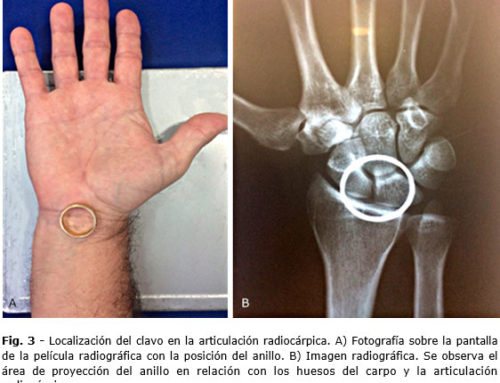The Revolution of Personalized Medicine –
Are We Going to Cure All Diseases and at What Price?
Concept Note
Casina Pio IV, 8-9 April 2019
Aaron Ciechanover
The Technion Integrated Cancer Center (TICC)
The Rappaport Faculty of Medicine and Research Institute, Technion-Israel Institute of Technology, Haifa, Israel
One of the decades-old mysteries in medicine has been the observation that apparently similar diseases have a vastly different course in different patients. Similarly puzzling has been has been the hugely different response of patients with the “same” disease to similar drug treatment. Some patients respond favorably, some moderately, some do not respond at all, and some develop a broad range of side effects – from mild to fatalities – with or without a beneficial effect of the drug for the primary ailment for which it has been prescribed. Physicians and researchers have been lacking tools to predict the disease course or the response to drugs in individual patients, and have relied largely on statistics. While we have realized that these differences stem from the different genetic repertoire people harbor, we lacked access to the code. When the term Personalized Medicine was coined by Leroy Hood and became part of our daily jargon a bit more than a decade ago, the realization of this goal appeared to be an inevitable milestone on the road of future medicine. The journey began with the sequencing of the first human genome that lasted several years, cost several hundred million dollars, and was completed in 2000. With exciting technological developments, time span and cost have been shortened dramatically and still continue to decrease, converting genomic sequencing into an almost routine clinical test. The development of additional omics platforms (e.g. transcriptomics, proteomics, metabolomics) added important missing layers to our ability to obtain a complete profile of the individual patient and reaching a precise diagnosis of the pathogenetic mechanism of his/her ailment. Yet, the main gain of this revolution is still ahead of us – the discovery of novel disease targets with the development of therapeutic modalities to target them. With the mirror of medicine turning from treating a disease to treating a disease in the context of an individual patient – Personalized Medicine is going to be – in the vision of Leroy Hood – more Precise, but also Predictive, and therefore Preventive. Importantly, it is going to be also Participatory, where the patient is going to play a major role in the decision-making process of his/her treatment, and the physician becoming more of a professional consultant rather than an absolute authority. The newly evolving medicine is therefore known also known as the 4P’s medicine.
While some of the promises of this “simple” road map view remain, the path has become more convoluted, and major roadblocks have emerged. The promise of Personalized Medicine was initially painted with rosy colors, in large part due to naiveté in the scientific and medical communities with respect to the complexity of the problem. In addition, some scientists were eager to convince the public and funding agencies that a defined roadmap toward new therapies for many diseases was around the corner, lacking only adequate funding. While the goals of Personalized Medicine can still be achieved, a more realistic view of the obstacles and pitfalls is needed. Obstacles reside in each and every level of the road to this revolution – from scientific discovery to drug development by pharmaceutical companies, and from legal to administrative concerns to political, religious and ethical issues. For example, the role of non-coding DNA, though shown to be associated with disease pathogenesis, is still largely unknown. The map of proteins interactomes and the pathways that regulate different processes are only partially known. We are still missing technologies to analyze the entire proteome and post-translational proteome with complete coverage, and unravel its dynamics and response to different cues. The same is true for the metabolome – technologies to dynamically analyze small molecules such as sugars and lipids. Above all these shortcomings – it has become clear that many diseases, psychological (e.g. autism), but many others such a metabolic, heart and lung diseases (e.g. COPD) are multi-genic, and the distinction between the primary and secondary drivers – the passengers and hitchhikers – has become a daunting task. We learnt that the phenotypic pathology depends on the penetrance of the different genes involved and their modulation by environmental factors. The elusive behavior of tumors, for example, has elicited a fierce debate on the therapeutic approach to cancer – whether to target the specific mutations, which accumulate and become resistant to therapy, or to target major upper stream “switches” such as evasion of cell death, immune surveillance, growth promoters, and dysregulation of cellular energetics. We learnt the hard way that genetic variation is not equivalent to dysfunction. The mere interaction of 20,000 gene products with 20,000 small molecules provides an array of 400 million potential interactions. Another obstacle resides in “multimorbidity”. Realizing that 25% of all people and 65% of people who are above 65 years of age, have multiple morbidities challenges our prior single-disease paradigm and leads to further exploration of common pathways for disparate diseases.
From the standpoint of drug development, a major concern is that Personalized Medicine will mark the end of the blockbuster era, where one or a few competing drugs are being used to treat an entire population with a certain disease. For example, the now familiar classification of patients with breast cancer based on expression of HER/Neu2, estrogen receptor mutation, progesterone receptor mutation and the still “mysterious” triple negative malignancy is likely an oversimplification of this complex disease. In the future, an array of genomic, RNA, proteomic and metabolic data will likely be used to identify more types which will divide the patients populations into smaller groups, each requiring a specific treatment. Pharmaceutical companies are already reluctant to develop certain short-lived drugs such as antibiotics, and may not be enthusiastic to develop drugs targeting a smaller number of patients. In this setting, drug development will become prohibitively expensive. To respond to this problem, investment is needed to develop improved preclinical disease models that can be used to predict drug efficacy and toxicity. This process might be facilitated by using Personalized Medicine approaches to identify factors that might make individuals more or less sensitive to certain drugs. This problem of drug pricing resides already in the twilight zone between technology and bioethics – whether the products of this exciting revolution are going to be accessible to different patients populations worldwide.
Most difficult to resolve however are the true bioethical issues emerging from the revolution of Personalized Medicine. For example, genomic analysis of a blood or a tissue sample for clinical research or even personal purposes, might have multiple, unforeseen implications. Some “simple” questions relate to the privacy and confidentiality with respect to the potential use of the information by employers, governments, or insurance companies to make decisions that are not necessarily related to the health care of the patient. More complicated is the problem of how to address incidental information referring to a potential or evolving pathology of which the patient is unaware, and for which he/she might not have consented, particularly, the discovery of a predisposition to a disease that cannot be treated or prevented. This problem is even more complex when the information is discovered as part of prenuptial testing or in utero examinations of embryos, and needless to say, bear important implications to the children of the patient. This information has the possibility to affect physician-patient relationship, social networks, family structure, and parenthood in ways that are difficult to predict. These rapidly evolving ethical challenges will require continuously updated guidelines and legislation. The scientific community needs to proactively and transparently communicate recent discoveries generated in laboratories to engage the political, philosophic, clerical, and judicial members of society to meet the challenges of ethical utilization of data and new technologies.
In conclusion, the road to Personalized Medicine is longer and more tortuous than we imagined a decade ago. We find ourselves in the midst of an exciting era in medicine in which we can see that the promise of individualized prevention, early detection, and efficient treatment of diseases is possible. This revolution of Personalized Medicine has passed the stage of conception and entered reality, with well-documented examples of intervening in human health earlier and more effectively than ever before. Furthermore, the discovery of the CRISPR-Cas9 technology for gene editing has opened to road to “correct” mutations [it has already been used recently to treat Mucopolysaccharidosis II (Hunter’s disease)]. Realizing this goal will require however innovative multidisciplinary approaches to address the scientific, commercial and ethical challenges posed by these new technologies and techniques. Like many endeavors in research, the next milestone in the road may not be around the corner and might come from an unexpected source. Continued investments in high quality research using both traditional and novel approaches in a wide field of study will be required to achieve these goals. As we do this, it is important to remember what our patients might think of when they hear the term “Personalized Medicine”. For example, Carolyn Bucksbaum recently provided $42 million gift aimed at improving bedside manners (New York Times, September 22, 2011) by establishing a center to teach doctors “bedside manners” and to “preserve kindness and personalize” the patient-doctor relationship. Providing both the Personalized Medicine described by Dr. Hood and Ms. Bucksbaum represents an exciting challenge in the practice of medicine in the 21st Century.
Thus, the path to Personalized Medicine is not hopelessly long, but will require thoughtful planning, coordinated efforts and continued societal investment.
The speakers only Workshop in the beautiful set up of the almost 400 years old Pontifical Academy of Sciences that resides in a gorgeous building in the Vatican, will discuss all these issues. It will provide a technical background to the roots and current state-of-art of the revolution of Personalized Medicine, but will devote an equal part to its complexity, the technological one, but most importantly the bioethical one.
This Introduction is partially based on the commentary:
Sznajder, J.I., and Ciechanover, A (201). Am. J. Respir. Crit. Care Med 186, 945-947. doi: 10.1164/rccm.201210-1772OE.
http://www.casinapioiv.va/content/accademia/en/events/2019/medicine.html








